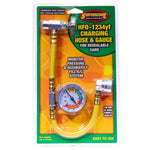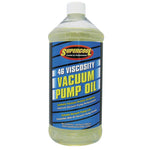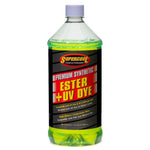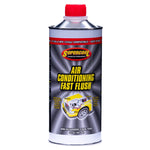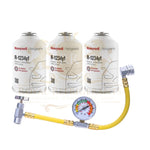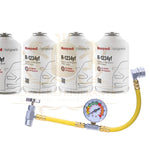You have no items in your shopping cart.
Everything You Need to Know About 438A FREON for HVAC and Automotive Applications
As older refrigerants like R22 are phased out due to environmental concerns, the HVAC and automotive industries are turning toward safer and more efficient alternatives. One such solution is Freon™ 438A, also known as MO99. Designed as a reliable drop-in replacement for R22, 438A has become a popular choice in both residential and commercial cooling systems. In this guide, we’ll explore everything you need to know about 438A Freon — from its composition and advantages to its applications and retrofit process
What Is 438A Freon?
Freon™ 438A (also known as MO99 or R-438A) is a hydrofluorocarbon (HFC) refrigerant blend developed by Chemours as a direct replacement for R22 in existing systems. It was engineered to match the cooling capacity and efficiency of R22 while reducing environmental impact and requiring minimal system modifications.
• Chemical type: HFC blend (contains R32, R125, R134a, R600, and R601a)
• ODP (Ozone Depletion Potential): 0
• GWP (Global Warming Potential): ~2265
• Lubricant compatibility: Works with mineral oil, alkylbenzene, or POE oil, eliminating the need for lubricant changes in most systems.
Why Choose 438A as an R22 Replacement?
With R22 production phased out in many regions due to its ozone-depleting properties, system owners face the challenge of finding suitable alternatives. 438A Freon addresses this challenge by offering:
• ✅ Drop-in replacement – Minimal system changes required.
• ✅ Cost-effective retrofit – No need for new equipment or lubricant changes in most cases.
• ✅ Improved efficiency – Delivers cooling performance comparable to R22.
• ✅ Environmentally safer – Zero ozone depletion potential (ODP).
• ✅ Versatility – Suitable for a wide range of HVAC and refrigeration systems

Applications of 438A Freon
HVAC Systems:
• Residential and commercial air conditioners
• Rooftop units and packaged systems
• Heat pumps
• Chillers and air handling units
Refrigeration Systems
• Supermarket display cases and freezers
• Cold storage warehouses
• Ice machines
• Walk-in coolers
Automotive Applications
While 438A is primarily designed for stationary HVAC and refrigeration systems, it can also be used in specialized automotive air conditioning systems that previously relied on R22, especially in older or industrial vehicles
Retrofit Guidelines: Converting from R22 to 438A
One of the biggest advantages of 438A Freon is the simple conversion process. Here’s a step-by-step overview:
1. Evaluate the system – Inspect for leaks, worn components, and oil type.
2. Recover existing R22 – Ensure full recovery and proper disposal per EPA guidelines.
3. Replace filter-driers and service valves – If necessary, install new components.
4. Check and maintain existing oil – 438A is compatible with most oils used in R22 systems.
5. Charge with 438A Freon – Use about 85–95% of the original R22 charge by weight.
6. Monitor performance – Check for proper pressures, temperatures, and superheat/subcooling levels.
Pros and Cons of 438A Freon
Pros:
• Easy and cost-effective retrofit from R22
• Zero ODP and environmentally safer
• Compatible with existing system oils
• Reliable performance across a wide range of applications
Cons:
• Higher GWP compared to newer low-GWP alternatives
• Slight capacity variation (~5–10%) in some systems
• Not ideal for systems requiring ultra-low temperatures
Conclusion
Freon™ 438A (MO99) is one of the most practical and widely used replacements for R22 refrigerant in HVAC and refrigeration systems. Its excellent performance, lubricant compatibility, and minimal retrofit requirements make it a top choice for homeowners, facility managers, and technicians seeking a seamless transition away from R22. While it may not offer the lowest GWP on the market, its balance of performance, cost, and ease of use ensures that 438A remains a reliable solution for years to come.
 English
English

